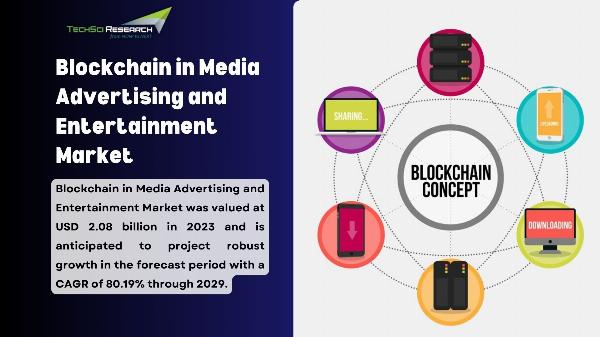 Schema + Rich Snippets – Dominate Search with Visual Results!
Schema + Rich Snippets – Dominate Search with Visual Results!
Understanding Blockchain in Crypto Coin Development A Beginner's Guide
Written by Liam Jack » Updated on: June 17th, 2025 193 views

Blockchain technology has revolutionized the world of finance and beyond, laying the foundation for cryptocurrencies. If you’re new to the world of crypto coin development, understanding blockchain is crucial. This guide will break down the basics, explore its role in crypto coin development, and provide insights into how blockchain powers the cryptocurrency ecosystem.

What Is Blockchain Technology?
Definition and Key Features
Blockchain is a distributed ledger technology that records transactions across a network of computers. Key features include:
Decentralization: No central authority governs the data.
Transparency: All transactions are visible to participants.
Immutability: Data recorded on the blockchain cannot be altered retroactively.
Security: Advanced cryptographic algorithms protect the network.
How Blockchain Works
Data Blocks: Information is stored in blocks.
Hashing: Each block contains a cryptographic hash of the previous block, ensuring a secure chain.
Consensus Mechanisms: Networks use protocols like Proof of Work (PoW) or Proof of Stake (PoS) to validate transactions.
Decentralized Network: Copies of the blockchain are distributed across multiple nodes.
The Role of Blockchain in Cryptocurrency Development
Creating a Secure Foundation
Blockchain acts as the backbone of cryptocurrencies, providing a secure and transparent platform for transactions. It eliminates the need for intermediaries, enabling peer-to-peer exchanges.
Facilitating Trust and Transparency
Cryptocurrencies like Bitcoin and Ethereum rely on blockchain to ensure trust in transactions. Each transaction is recorded publicly, allowing anyone to verify its validity.
Enabling Smart Contracts
Smart contracts are self-executing agreements coded on the blockchain. They automate processes like payments and reduce the potential for fraud.
Steps to Develop a Crypto Coin Using Blockchain
Step 1: Define Your Use Case
Determine the purpose of your cryptocurrency. Will it serve as a payment method, utility token, or governance token?
Step 2: Choose a Blockchain Platform
Popular platforms for crypto coin development include:
Ethereum: Known for its smart contract capabilities.
Binance Smart Chain: Offers lower transaction fees.
Solana: High-speed and scalable.
Step 3: Develop the Architecture
Plan the structure of your cryptocurrency, including features like consensus mechanisms, tokenomics, and transaction validation.
Step 4: Code Your Cryptocurrency
Write the code for your coin using programming languages such as Solidity, Rust, or Python. Consider using development tools like Remix for Ethereum.
Step 5: Test Thoroughly
Before launching, conduct rigorous testing to identify and fix bugs. Utilize testnets to simulate real-world conditions.
Step 6: Launch and Maintain
Deploy your cryptocurrency on the mainnet and continually update it to adapt to market and technological changes.
Challenges in Blockchain and Crypto Coin Development
Scalability
Blockchain networks can face delays during high traffic periods. Solutions like Layer 2 scaling and sharding are being developed to address this.
Security Threats
Although blockchain is secure, it is not immune to attacks such as:
51% Attack: When a single entity gains control of the majority of the network.
Smart Contract Vulnerabilities: Poorly coded contracts can be exploited.
Regulatory Concerns
Different countries have varying regulations regarding cryptocurrencies, which can impact adoption and development.
Cost to Develop Cryptocurrency Exchange App like Coinbase
Developing a cryptocurrency exchange app like Coinbase involves significant investment, as it requires robust features, security measures, and scalability. Here’s a breakdown of potential costs:
Factors Affecting Cost:
App Features: Basic apps with core functionalities (e.g., trading, wallet integration) cost less than advanced ones with features like staking, DeFi integration, and analytics.
Platform: Developing for a single platform (iOS or Android) is cheaper than a cross-platform app.
Security Protocols: High-grade security features such as two-factor authentication, SSL encryption, and anti-fraud mechanisms add to the cost.
API Integration: Integration with multiple payment gateways and third-party services increases development expenses.
Development Team: Costs vary based on the team’s location and expertise.
For more Info Visit our blog
https://blocktunix.com/cost-to-develop-cryptocurrency-exchange-platforms-like-coinbase/
The Future of Blockchain in Crypto Coin Development
Emerging Trends
Interoperability: Bridging multiple blockchains for seamless operations.
Eco-Friendly Protocols: Transitioning to sustainable models like Proof of Stake.
Decentralized Finance (DeFi): Expanding blockchain’s role in financial services.
Opportunities for Developers
Blockchain offers immense opportunities for innovation. Developers can explore areas like tokenization, decentralized apps (dApps), and non-fungible tokens (NFTs).
Conclusion
Blockchain is at the heart of cryptocurrency development, offering a secure, transparent, and decentralized framework for digital assets. By understanding its core principles and applications, developers can harness blockchain’s potential to create innovative solutions. Whether you’re building your own crypto coin or exploring blockchain’s capabilities, this beginner’s guide is your first step toward mastering this transformative technology.
Note: IndiBlogHub features both user-submitted and editorial content. We do not verify third-party contributions. Read our Disclaimer and Privacy Policyfor details.
Copyright © 2019-2025 IndiBlogHub.com. All rights reserved. Hosted on DigitalOcean for fast, reliable performance.
















